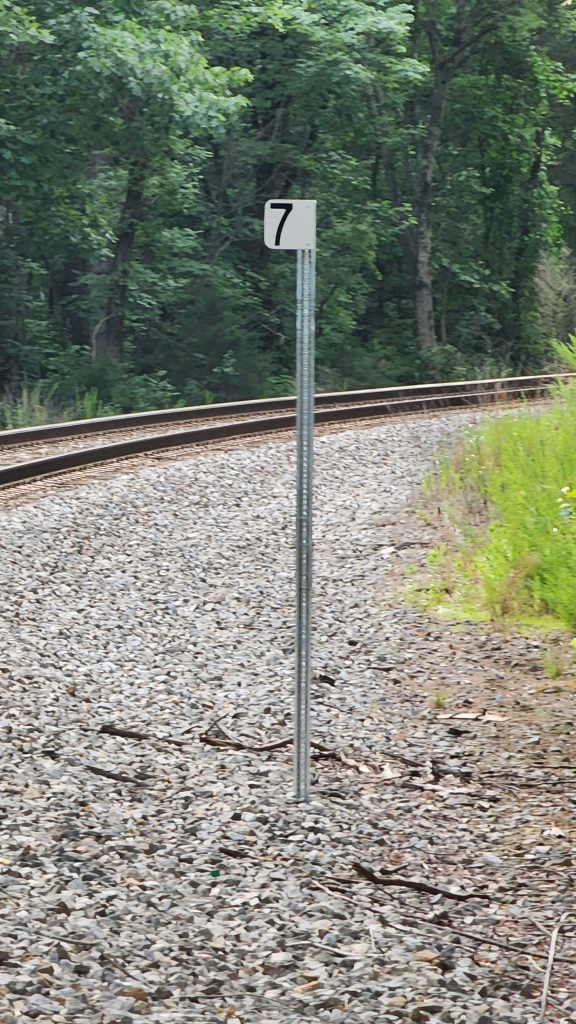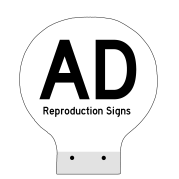This page will contain a semi-detailed history of Southern Railway milepost signs including both Richmond & Danville and Norfolk Southern signs.
Richmond & Danville (Pre 1894)
Richmond & Danville mileposts were the first to feature the cast iron post design that was common across the entirety of the Southern Railway. The mileposts featured 3 different casts depending on the number of digits and also had the milepost numbers as part of the cast. This means that any surviving mileposts today will still feature their original numbers. The signs featured a very unique mounting method that involved a metal “stub” extruding from the base of the sign that could be inserted into the post for stability. My assumption as well is that the stub allowed for individuals to handle replacements on their own without requiring additional help. Paint schemes most likely varied over time, but it is safe to assume (based on the 1901 Southern Railway standards and various photographs) that the signs and posts were painted white with only the numbers having black paint. As the style changed over time, the mileposts were likely painted to match all others throughout the system. This is evident in the pictures below at the 71 milepost in Valdese, NC and the 34 milepost in Melrose, NC.
The cast numbers associated with the R&D mileposts were as follows:
- E-67 for 1 digit mileposts
- E-66 for 2 digit mileposts
- E-68 for 3 digit mileposts
- E-220 for bulbed posts
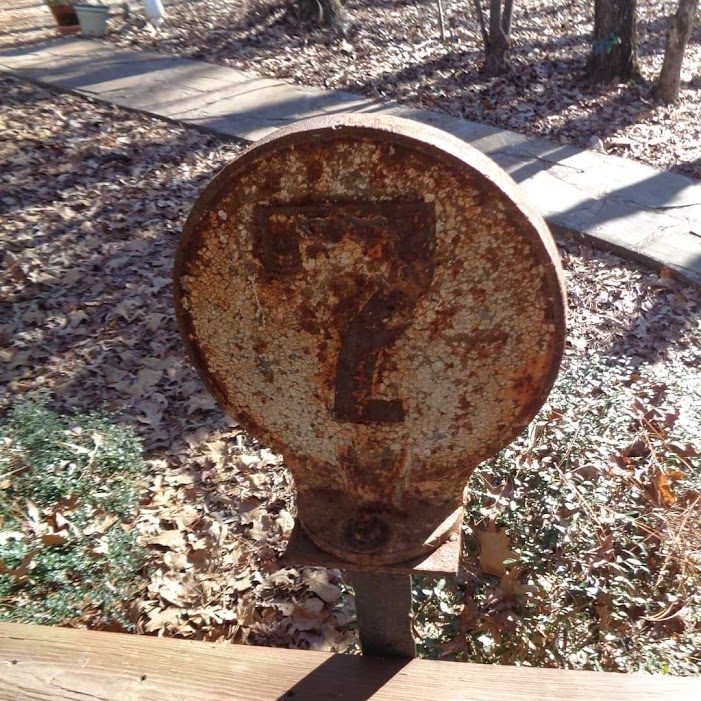


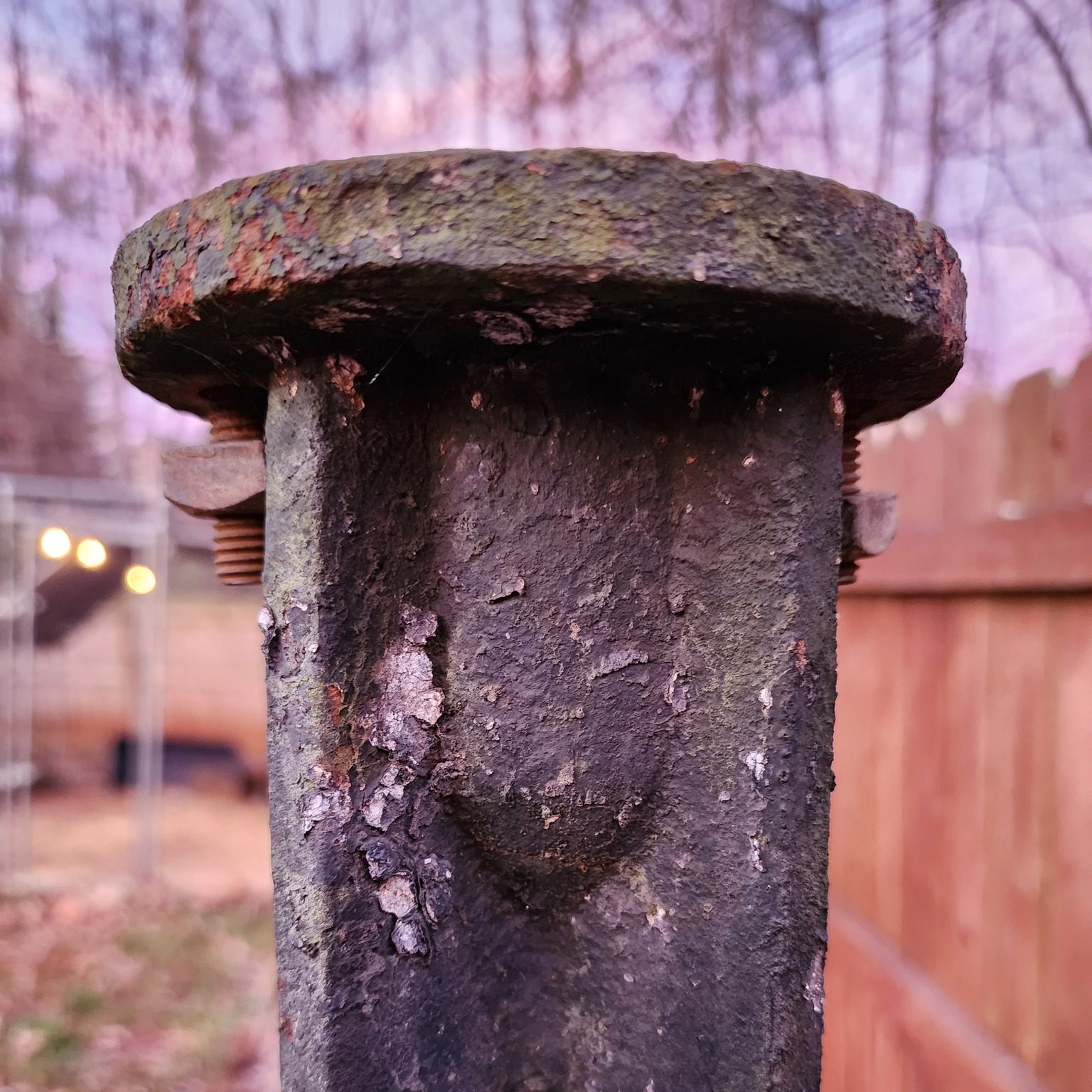
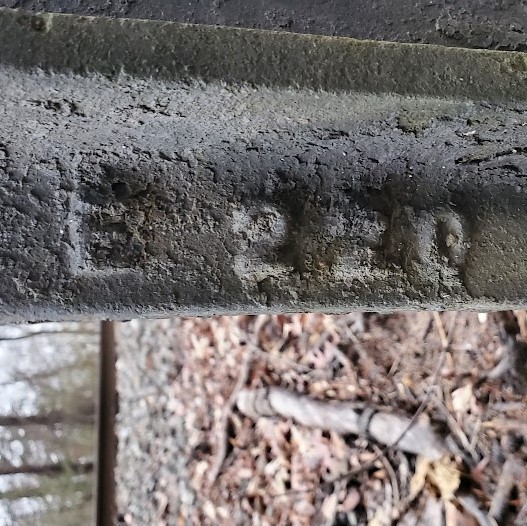
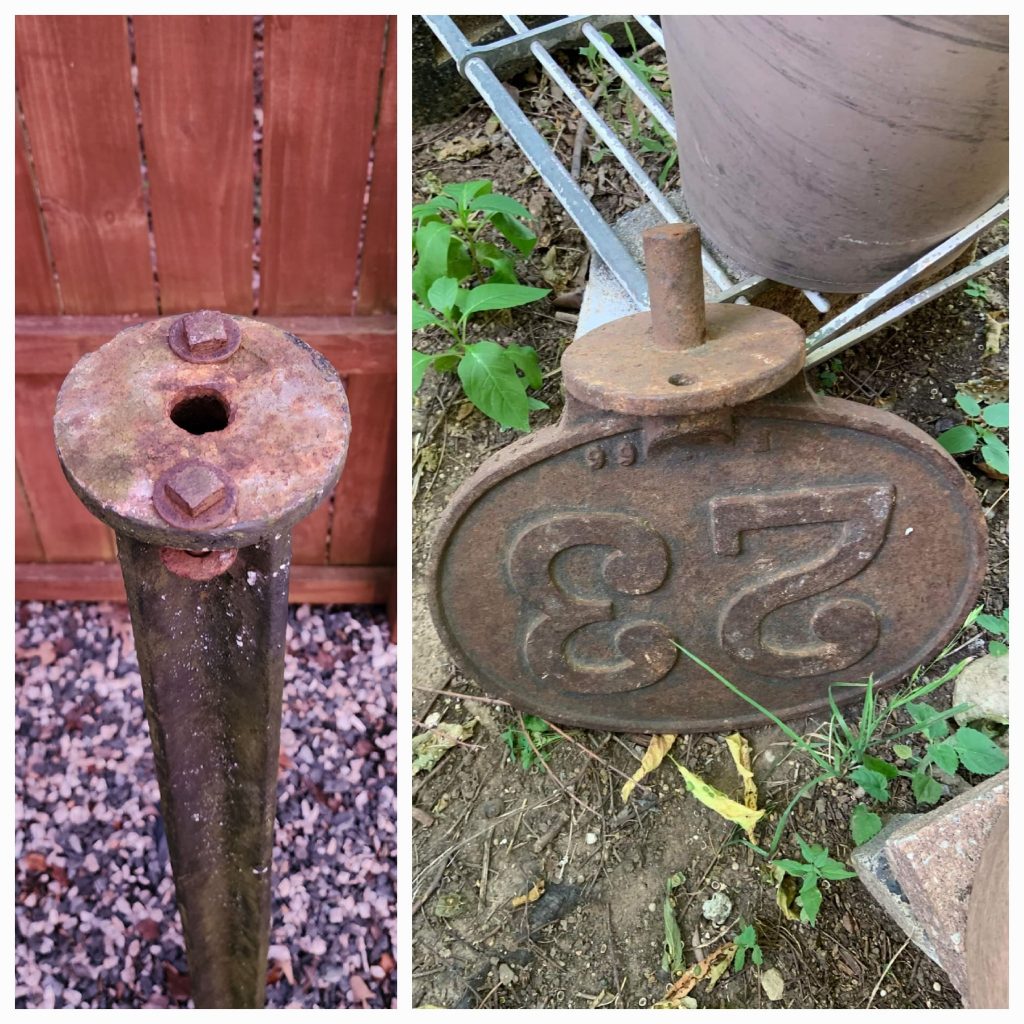
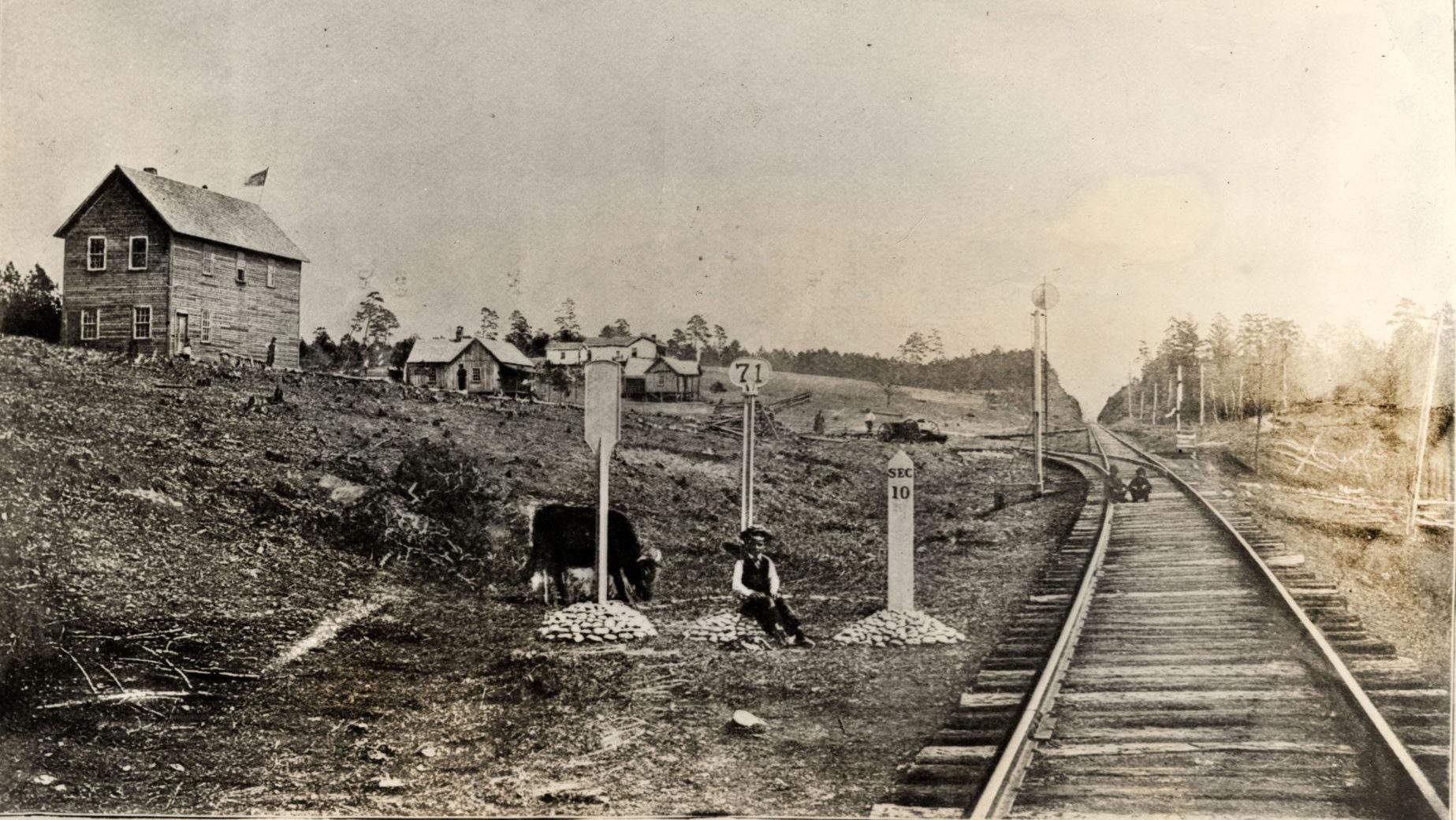
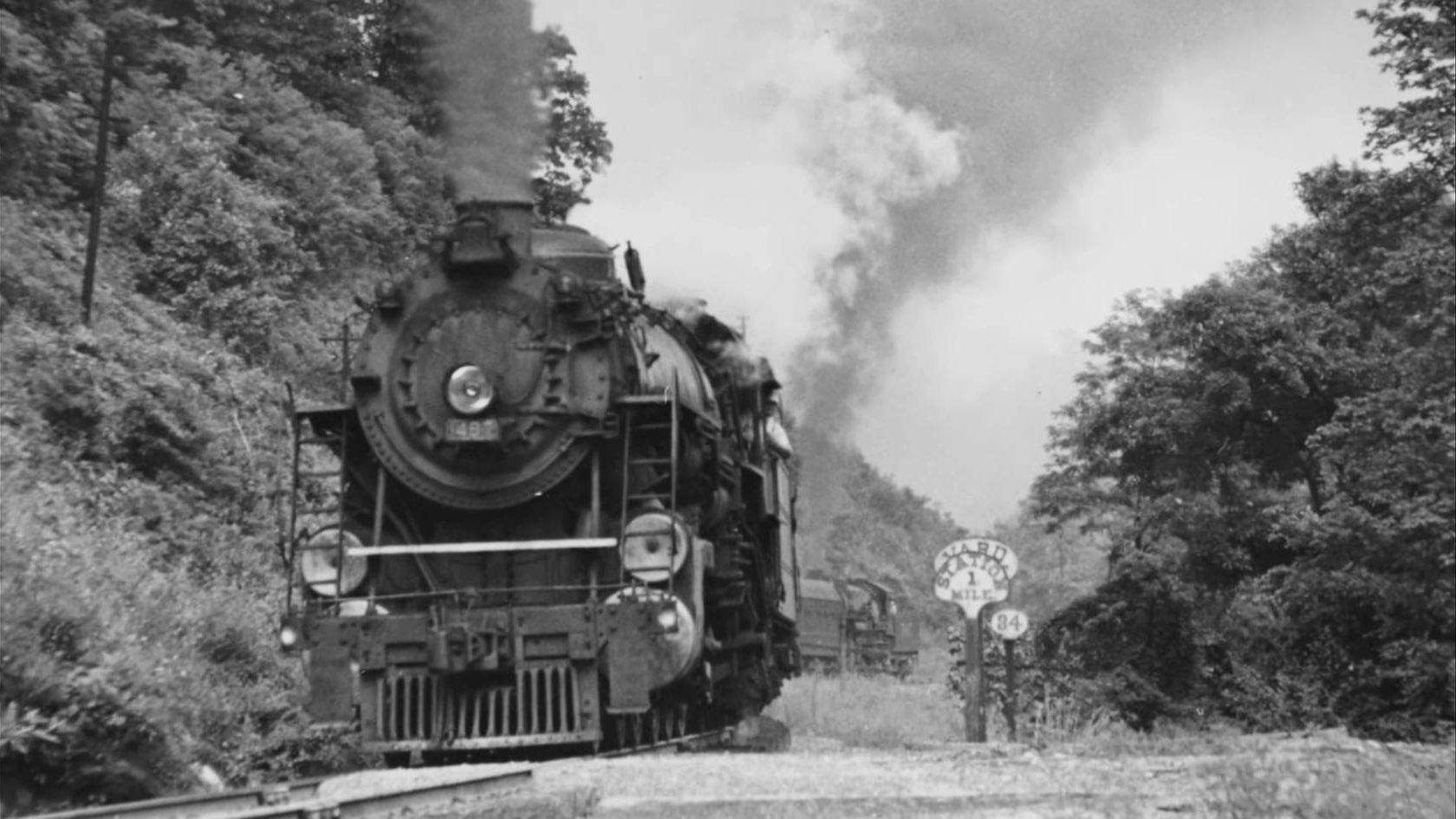

Early Southern Cast Iron (1894 – 1914)
Early Southern Railway cast iron mileposts were switched to a more efficient stencil style vs having individually cast signs. The reasoning for this is not known for certain, but it most likely was a cost cutting measure in response to the financial issues that led to the formation of the Southern Railway in the first place. These signs also simplified the number of base casts needed by combining 1/2 digit mileposts and 3/4 digit mileposts, a practice that would last until the end of the Southern itself. While the mileposts were cast, at the time of the 1901 standards, all other signage was still wooden.
The cast number associated with early Southern mileposts were as follows:
- R-785 for 1 or 2 digit mileposts
- R-786 for 3 or 4 digit mileposts
- R-784 for the 2-hole post
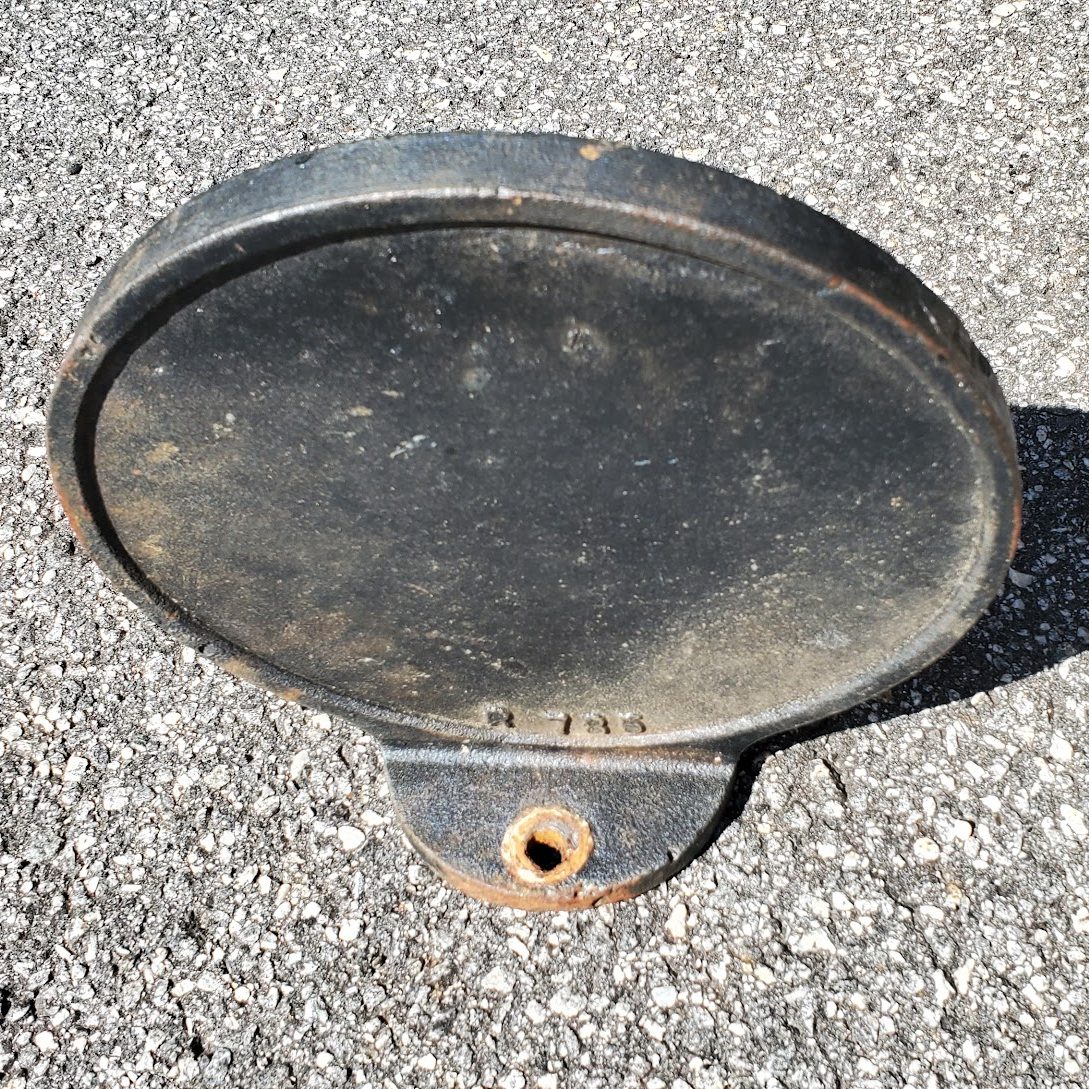
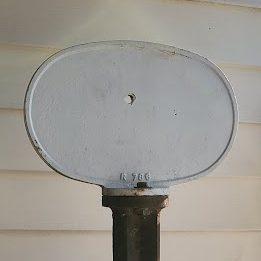


Late Southern Cast Iron (1915 – Early 1960s)
Late Southern Railway cast iron mileposts were almost exactly the same as the early versions, save for new cast numbers and a 4 vs 2 hole post. The change most likely occurred due to the transition from wood to cast iron for all signage on the system. The introduction of the universal 4-hole post allowed for the use of a single post on all signage, save for a few one-piece signs like the whistle post and clearance post.

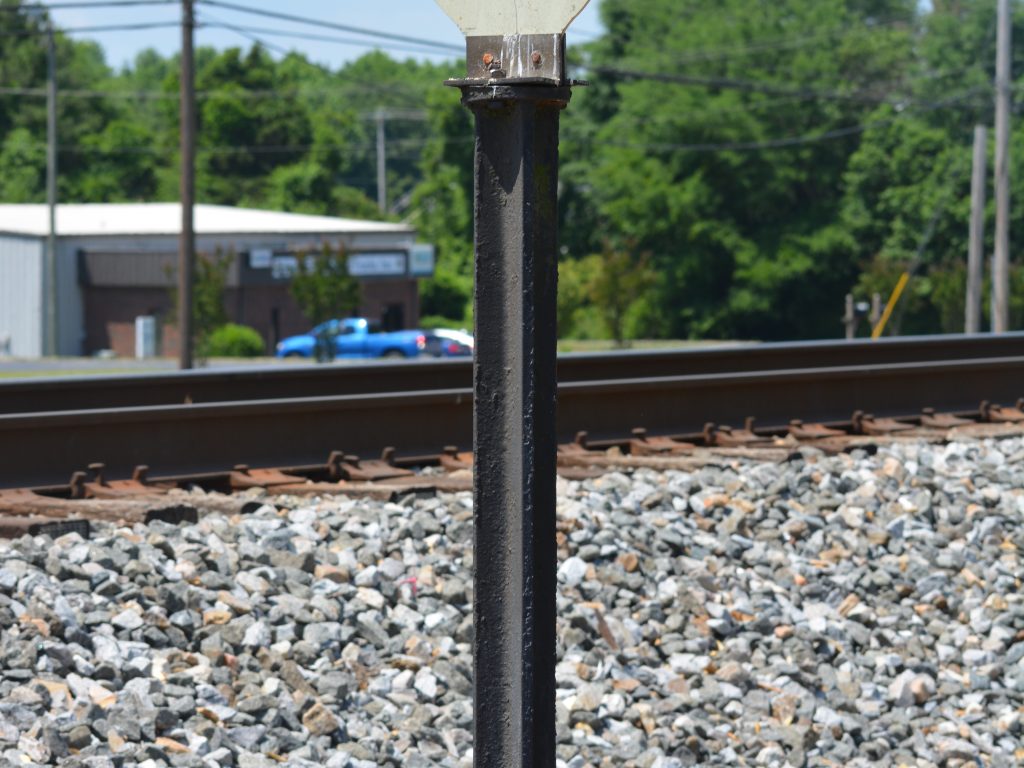

Early Southern Aluminum (Early 1960s – Late 1970s)
Early Southern Railway aluminum signage began to appear in the early 1960s. While I have not found definitive proof of this, the general belief is that the transition was started as a cost-cutting measure by DW Brosnan during his time as president from 1962 to 1967. The mileposts were made from 1/4″ aluminum plate with white retro-reflective vinyl backgrounds and black non-reflective highway-style numbers adhered on top. Brackets were also designed to allow mounting the signs to the existing cast iron posts throughout the system.
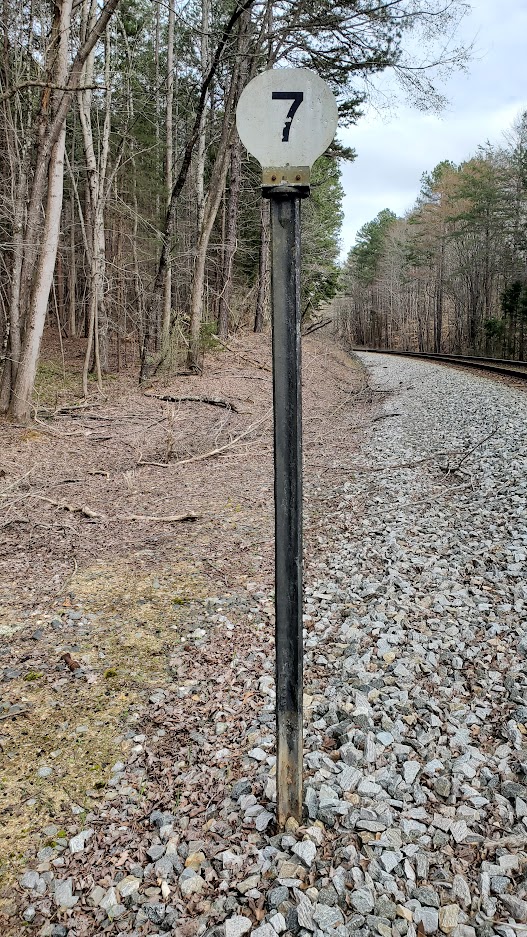

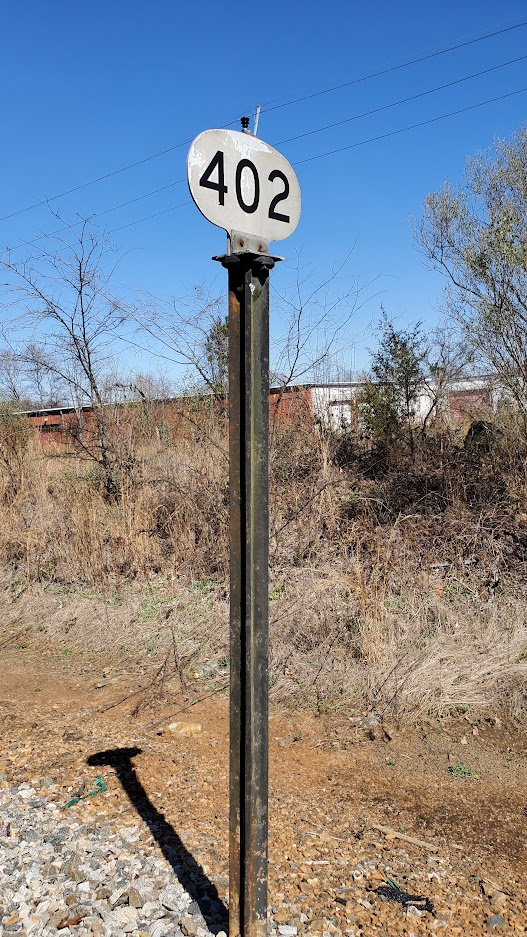
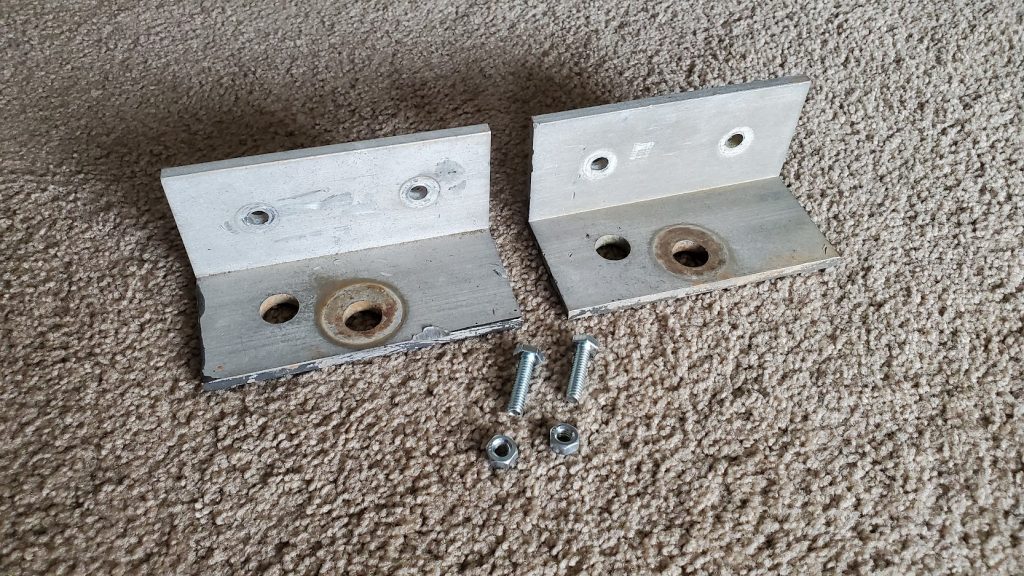
Late Southern Aluminum (Late 1970s – 1982)
Late Southern Railway aluminum mileposts were practically the same as the early variations, with the only major difference being the transition away from cast iron posts. Three different styles of post were used in this time period. In order of introduction, they were galvanized steel posts, Southern-style u-channel, and modern generic u-channel.
Galvanized Steel Posts: Believed to be an early alternative to cast iron posts, the posts featured a 2.5″ diameter galvanized steel pole with a mounting plate welded on top. The biggest difference between this post and other later posts was the fact that it still used the mounting brackets for attaching signs to cast iron posts.
Southern-Style U-Channel: This u-channel was about the same size as universal u-channel, but featured only four mounting holes in total. Two of the holes were in the flanges at the top of the channel and lined up perfectly with the mounting holes on the bottom of the signs.
Modern U-Channel: Modern u-channel appeared towards the end of the Southern Railway and was actually still used for a time on various rail lines after the merger. Most mileposts made towards the end featured four total holes after the addition of two vertical holes for mounting to modern u-channel.
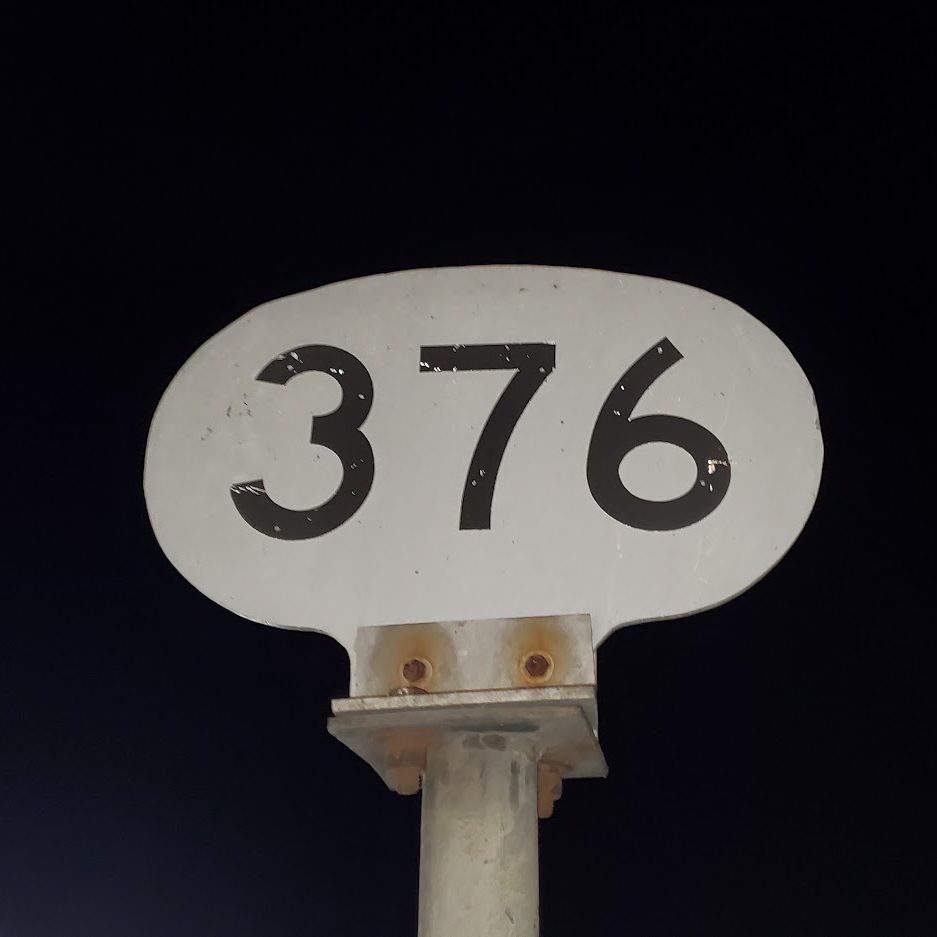

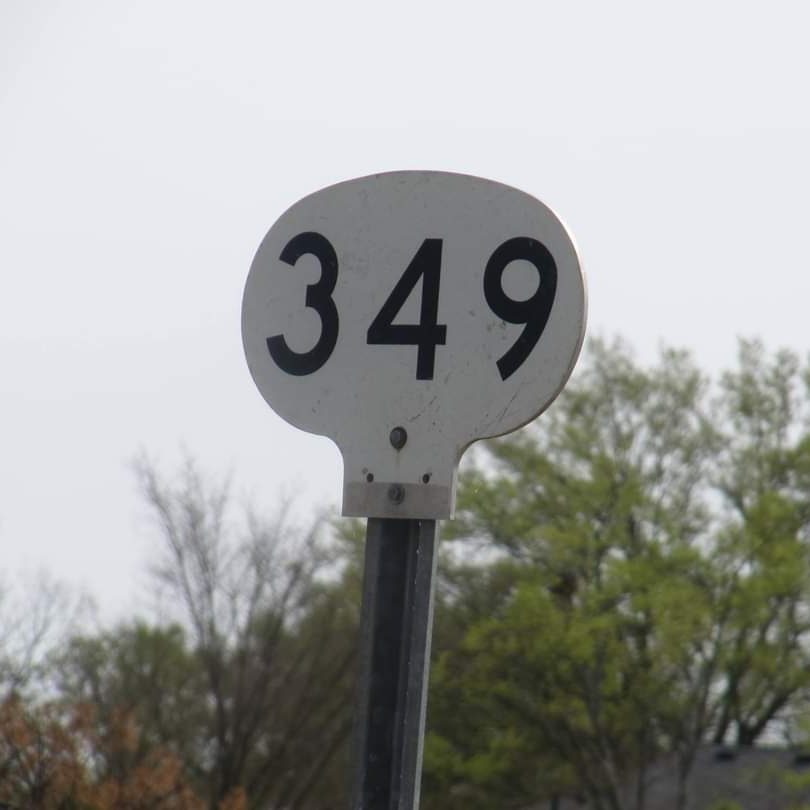

Early Norfolk Southern (1982 – Late 2000s)
Following the merger with the Norfolk & Western Railway, new standards were drafted for the newly created Norfolk Southern Railway. Various designs were used from both railroads for the different signs, but in the end, the Norfolk & Western design was chosen for mileposts. These were cheaper and easier to produce than the Southern style signs, and they could much more easily be attached to u-channel making them more universal across the various newly-merged rail lines. Though the signs were intended to be mounted to u-channel, many maintainers would continue to mount them to existing cast iron posts either using only one bolt, or drilling an additional mount hole.
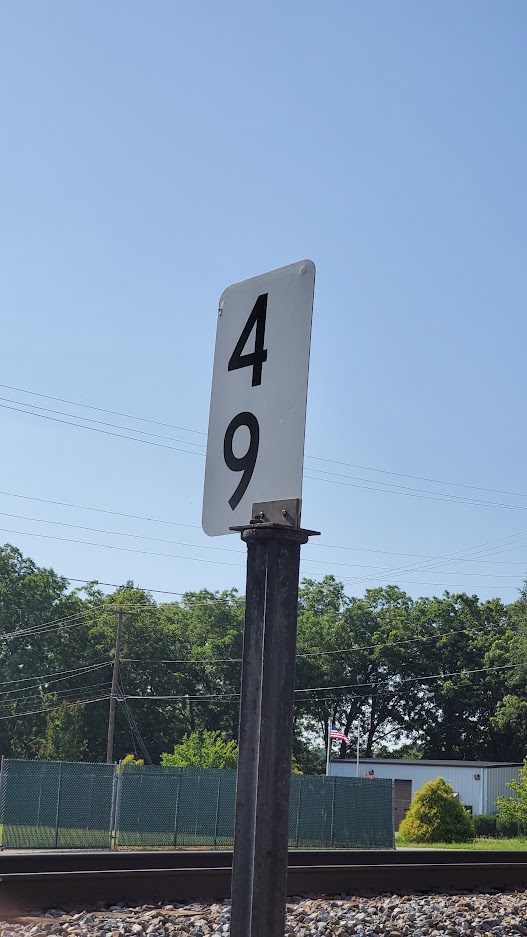

Modern Norfolk Southern
Sometime in the late 2000s, the current version of Norfolk Southern mileposts started appearing throughout the system. These mileposts, borrowing a design from the Conrail standards, used a combination of individual number signs to represent any milepost. This eliminated the need to create an individual sign for each milepost and allowed the railroad to bulk order massive amounts of single numbers for use anywhere. This same style can be seen nationwide in use by all Class I railroads.
This new style also spelled the end of the final remnant of Southern Railway signage: the cast iron post. Since the numbers could only be mounted to u-channel, sign replacements these days usually consists of removal of the original post. These signs, unlike previous variations, are also being installed system-wide through massive replacement projects. Lines such as the mainline from at least Lynchburg to Charlotte have had ALL Southern signage removed and new u-channel based signs installed in their place. With these projects occurring on multiple lines throughout the system, it’s only a matter of time before the last remnants of the Southern Railway finally disappear.
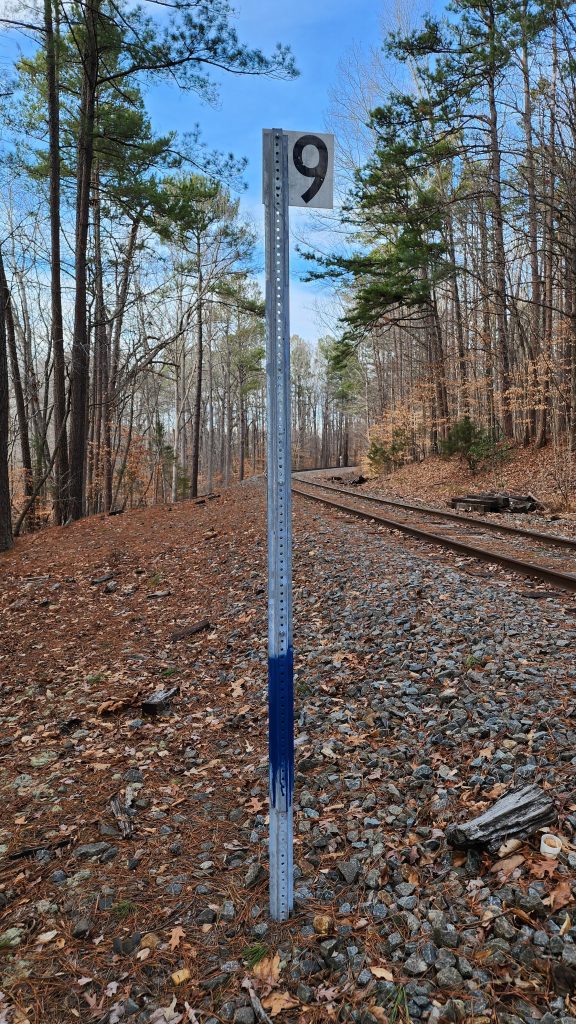
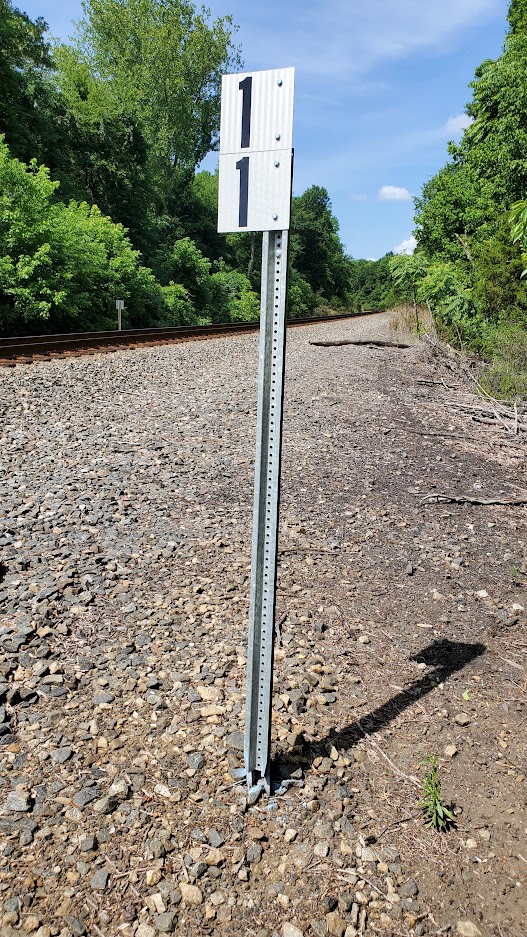
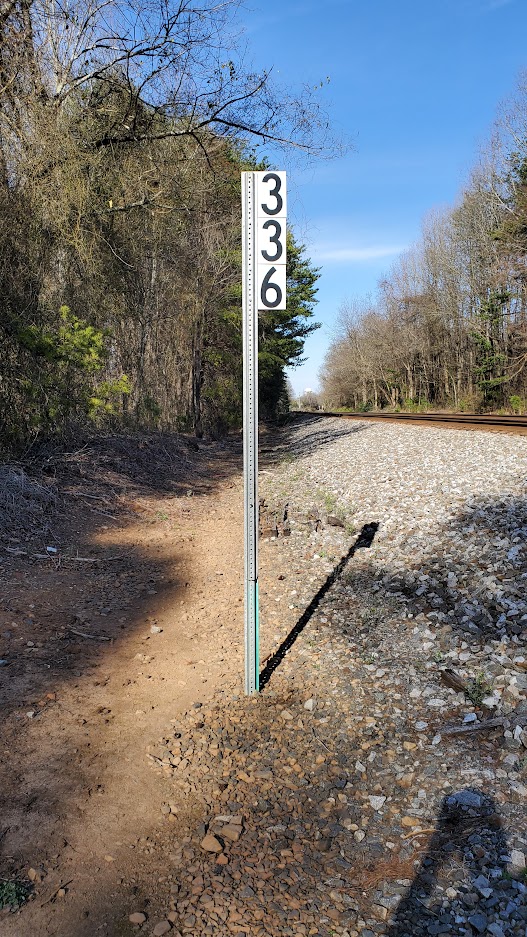
Post-2020 Modern Norfolk Southern
Starting in the 2020s, an even newer style milepost started appearing through the NS system. The new signs, while similar to the original modern signs, featured rounded outer corners and were slightly smaller. With the installation of these signs came some minor tweaks to the standards, as well, including increased height and standardized mounting direction. All signs are now mounted with the face (side facing out from u-channel) aimed towards the origin of the line. This means that all signs on a mainline that counts up to the west will face east.
At first, when these newer signs started appearing, they were mixed in with the older modern signs on some installations. This led to some very awkward looking mileposts as the 2 different styles were not made to be installed together, and had noticeable gaps between the numbers.
